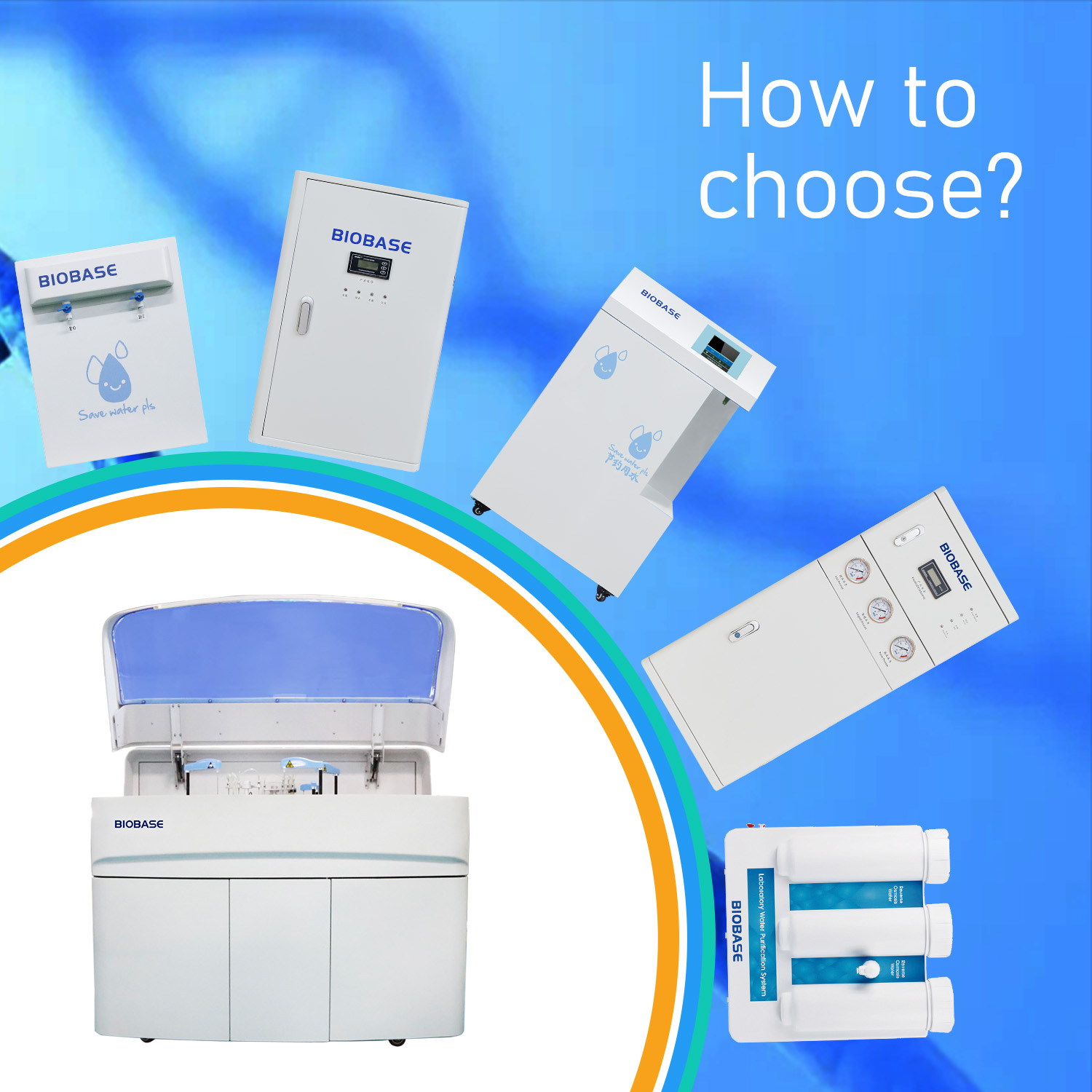How to equip a chemistry analyzer with a water purifier
The water purifier is a water treatment device that removes all solid impurities, salt ions, bacteria and viruses in the water through filtration, reverse osmosis, electrodialysis, ion exchanger, ultraviolet sterilization and other methods. The resistivity (25℃) of the produced pure water is generally 1.0-10.0 μS/cm, and the salt content is 1-5 mg/L.
The use of the chemistry analyzer is inseparable from the water purifier, but different chemistry analyzers need to be equipped with different water purifiers, how to choose?
The first thing to consider is the capacity of the water purifier:
Generally speaking, common chemistry analyzers on the market can be adapted to water purifiers ranging from 30 liters to 80 liters. Take different types of BIOBASE chemistry analyzers as an example:
Chemistry Analyzer | BK-280 | BK-400 | BK-800 | BK-1200 |
Throughput | 200T/H | 400T/H | 800T/H | 800~1200T/H |
Recommended Capacity | 30L | 30L | 40L | 60L、80L |

Next, consider the water inlet method of the chemistry analyzers:
1. The chemistry analyzer with self-priming water inlet has no requirements on the water outlet method of the water purifier, and there is no need to select a booster module.
2. The chemistry analyzer that requires external pressure to enter water has requirements for water intake. Because it can't absorb water itself, it need to ask the manufacturer to provide a booster module or choose a water purifier with a booster module.

Considering the above two points, you can generally choose a suitable water purifier. Of course, in addition, the quality and cost performance of the water purifier itself also need to be within the reference range. I hope this article can help you!
